The Impressive Fort of Jhansi, Uttar Pradesh || An Expansive Fort that became an inspiration for poetry, literature, and folklore after the revolt of 1857
While on our trip to Orchha and Khajuraho, Madhya Pradesh, in October 2021, we also had the good fortune to visit Jhansi as well. It was fascinating to learn that while Orchha is in Madhya Pradesh, Jhansi is in Uttar Pradesh, and the two cities are just half an hour apart.
But apart from the realization about how close the two cities in different states are, it was also good to know that petrol is cheaper in Uttar Pradesh than in Madhya Pradesh, so we got our tank filled on our way to Jhansi Fort. It did cost us much lesser than it would have had we got it filled in Orchha.
Related Blogpost - Orchha Palace Light and Sound Show || An Entertaining way to learn about the intriguing history of Orchha, Madhya Pradesh
Anyway, we reached Jhansi Fort at around 10 in the morning and found a good parking very close to the entry gates. It was a sunny day and was bound to get hot during the day, so we had water with us and had our sunglasses and hats and caps to ward off the sun.
Related Blogpost - The Raja Ram Temple in Orchha, Madhya Pradesh || Raja Ram's Holy Abode, Complete with a Guard of Honour and Personalized Security
The Jhansi Fort is managed by the Archeological Survey of India (ASI) and the entry tickets are very reasonable at least for Indian Nationals. For Indian Nationals and visitors from SAARC and BIMSTEC Countries, the ticket costs Rs. 20 per person. For foreign visitors, the ticket is Rs. 250 per person.
Related Blogpost - Beautiful and Unique Laxmi Temple in Orchha, Madhya Pradesh || Witness history through the fresco-laden walls of a beautiful temple
The fort opens at 6 am and closes at 6pm in summer. It would probably be nicer to explore it early in the morning when the sun is not so high and it isn't so hot. In general, it is always better to explore forts during the cooler hours because forts mostly means roaming around in open and climbing up and down steep stairs.
Related Blogpost - Orchha, Madhya Pradesh || The hidden land that adopted Lord Ram as their King in the 16th Century
Bundela King and ruler of Orchha, Bir Singh Ju Deo is credited with the construction of the Jhansi Fort in the year 1613. The Fort was built on the Bangira Hill in the city that is now known as Jhansi and was a stronghold of Jhansi's defense for several centuries. The Fort has seen several battles and sieges and some of these battles are inspirations for poetry, literature, and folklore.
Related blogpost - The Marvels of the Orchha Palace Complex || A Stunning, Solid & Complex Architectural masterpiece that came up over the centuries
During the reign of Maharaja Chhattrasal, in 1728, Mohammed Khan Bangash attacked his kingdom, and at that time Peshwa Bajirao helped Maharaja Chattrasal defeat the Mughal army. And in return, Maharaja Chattrasal offered the Peshwa a part of his kingdom, which included Jhansi.
Related Blogpost - Celebrating special Dussehra at grand Ram Leela Pandal of the town where Lord Ram is still worshipped as a king - Orchha, Madhya Pradesh
In 1742 Naro Shanker was made the Subedar of Jhansi. He had a tenure of 15 years in this position and this was a good tenure for Jhansi Fort. Because during this time, he added a new extension called Shanker Garh to the Jhansi Fort.
Related Blogpost - Chaturbhuj Temple, Orchha, Madhya Pradesh || A spectacular Abode of Lord Vishnu and his Avatars
The Peshwa called Naro Shanker back in 1757. And after that Jhansi saw a series of Subedars and in 1770, Raghunath Rao (II) Newalkar was appointed the subedar of Jhansi. His tenure was another great priod for Jhansi. He proved to be a great administrator and managed to increase the revenue of the state. He also built the MahaLakshmi Temple and the Raghunath Temple.
Related Blogpost - The breathtaking Chhatris of Orchha, Madhya Pradesh || Gorgeous Cenotaphs that honor generations of Bundela Rulers
But after this, Jhansi saw a series of bad Administrators that led to Jhansi's financial position deteriorating considerably. The British had however accepted Raghunath Rao (III) as the Raja of Jhansi and that led to his son Gangadhar Rao inheriting the throne and he turned out to be a good King.
Related Blogpost - Khajuraho one day Itinerary - How to spend a day around this World Heritage City of Madhya Pradesh in best way ?
And it was Gangadhar Rao who went on to marry Manikarnika Tambe, who took on the name of Rani Laxmibai after marriage, and who was one of the most famous rebel leader of the Revolt of 1857. It is this fighter queen that Jhansi Fort is most famous for.
The wedding between Raja Gangadhar Rao and Manikarnika Tambe took place in 1842. Rani Laxmibai gave birth to a boy named Damodar Rao in 1851. However, Damodar Rao died at just four months of age. The Royal Couple then adopted a boy called Anand Rao as their son. This adoption happened in the presence of the British political officer.
The Maharaja gave a letter to the British Officer instructing that the boy be treated with respect and that the government of Jhansi should be given to his widow for her lifetime. Anand Rao was renamed Damodar Rao. The Maharaja however was on his death bed at this time and he passed away soon after in 1853.
After the Maharaja's death, as the British rejected Damodar Rao's claim to the throne because he was adopted. In 1854, Laxmibai was given an annual pension of Rs. 60,000 and ordered to leave the palace and the fort. However, in June 1857, the revolt broke out and Rani Laxmibai took control of the fort and led Jhansi forces against the British.
In early 1858, British forces led by General Hugh Rose besieged the the Fort. Rani Lakshmi Bai fought bravely and once she knew that the battle was lost, she made a daring escape on horseback from the fort, with her son. The spot from where she is supposed to have jumped off the Fort is marked on the wall and one look at it is enough to imagine how desperate her situation would have been when she got on the back of the horse and jump off a great height.
In 1861 the British Government gave the Jhansi fort and Jhansi city to the Maharaja of Gwalior, Jiyaji Rao Scindia, but this arrangement was short-lived. The British took back Jhansi from Gwalior state in 1868.
Today the fort is being managed by the ASI and is undergoing some restoration. It is a huge fort with several interesting structures to explore and admire. The walk along the walls alone would take a couple of hours at least. And then there is the Panch Mahal, which was the home to Maharaja Gangadhar Rao and Rani Laxmi Bai. This structure was under renovation when we visited Jhansi, so we could only admire it from the outside.
We really enjoyed exploring the fort. It has several interesting passages and temples and buildings, as most old forts do. There are huge cannons strewn about. The fort is clean in general.
Even though we were here at this fort for almost 4 hours we couldn't still fully explore it. There were a few temples we did not climb up to, some structures we did not go inside, and some sections of the wall we couldn't walk on.
If you are headed to Orchha or even to Gwalior, it may be worth taking a few hours and visit this fort. It is quite large and interesting and once the restoration is complete, you may even be able to explore Panch Mahal, the abode of the heroic Jhansi ki Rani.


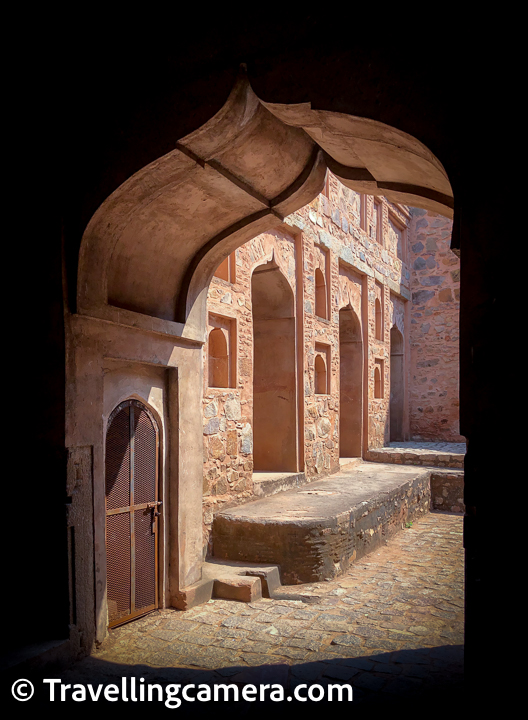
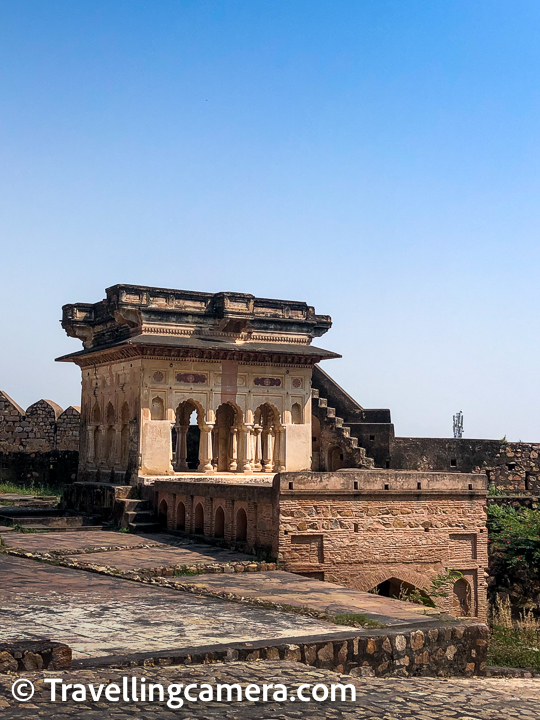
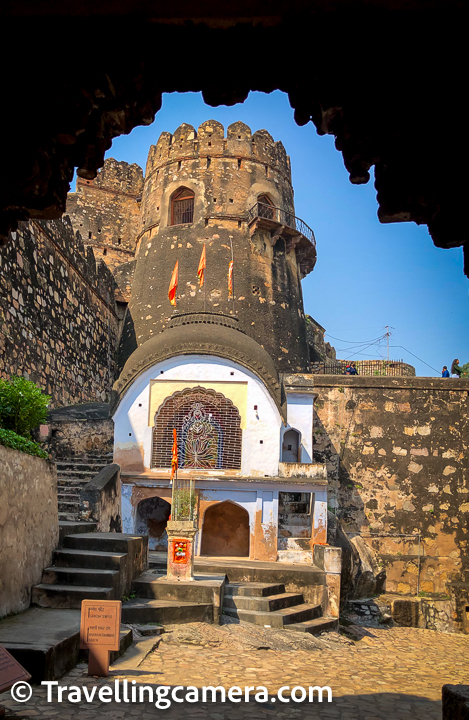


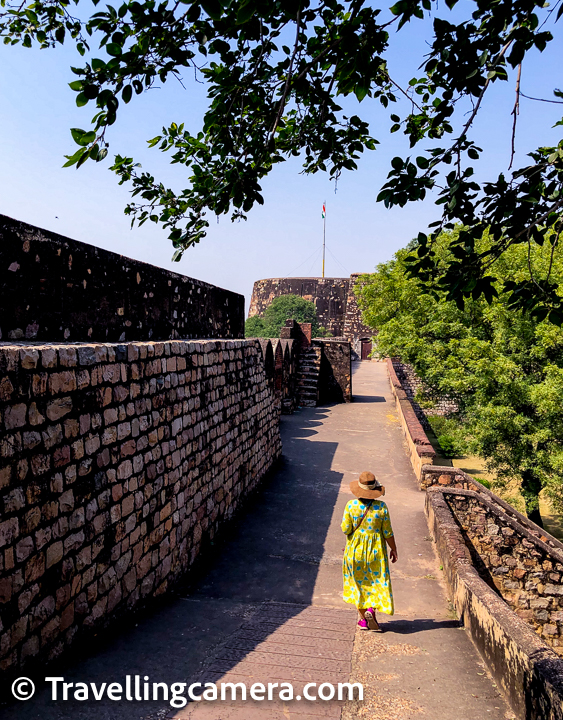











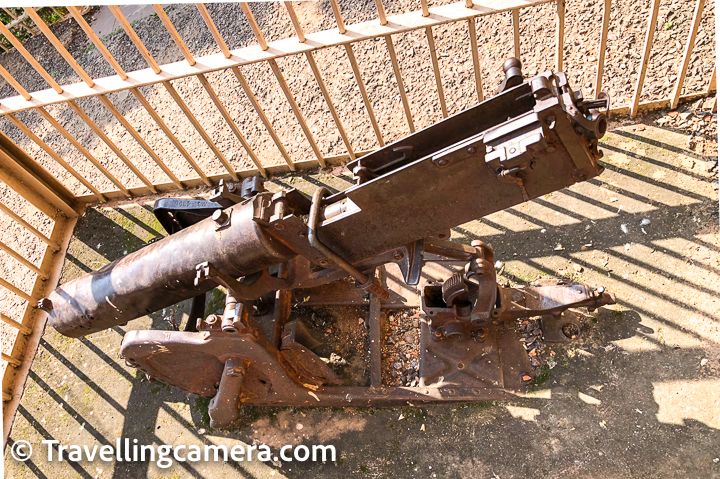
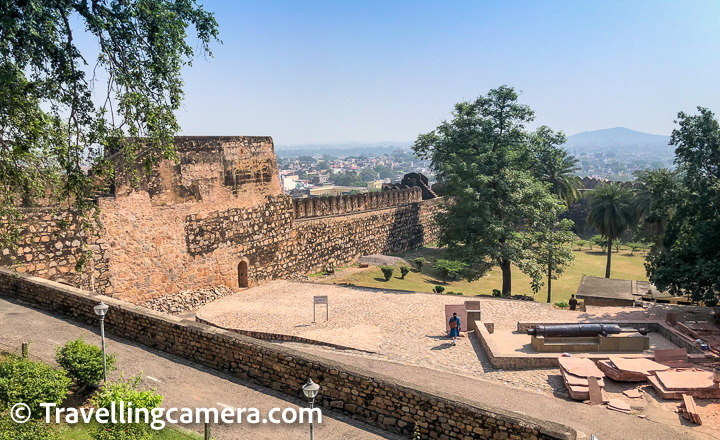

.jpg)
Comments